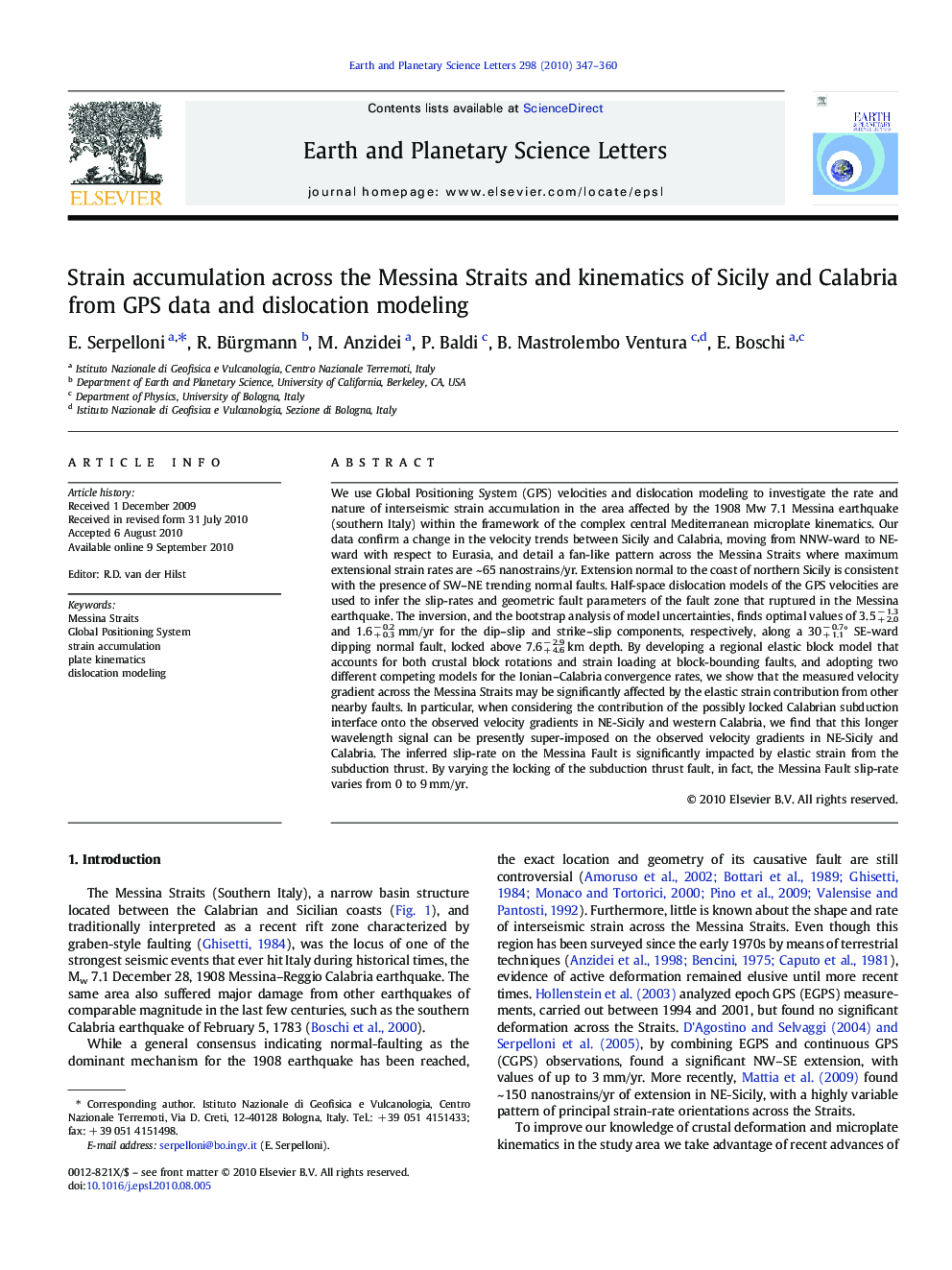| Article ID | Journal | Published Year | Pages | File Type |
|---|---|---|---|---|
| 4678411 | Earth and Planetary Science Letters | 2010 | 14 Pages |
We use Global Positioning System (GPS) velocities and dislocation modeling to investigate the rate and nature of interseismic strain accumulation in the area affected by the 1908 Mw 7.1 Messina earthquake (southern Italy) within the framework of the complex central Mediterranean microplate kinematics. Our data confirm a change in the velocity trends between Sicily and Calabria, moving from NNW-ward to NE-ward with respect to Eurasia, and detail a fan-like pattern across the Messina Straits where maximum extensional strain rates are ~ 65 nanostrains/yr. Extension normal to the coast of northern Sicily is consistent with the presence of SW–NE trending normal faults. Half-space dislocation models of the GPS velocities are used to infer the slip-rates and geometric fault parameters of the fault zone that ruptured in the Messina earthquake. The inversion, and the bootstrap analysis of model uncertainties, finds optimal values of 3. 5 + 2.0 − 1.3 and 1.6 + 0.3 − 0.2 mm/yr for the dip–slip and strike–slip components, respectively, along a 30 + 1.1 − 0.7° SE-ward dipping normal fault, locked above 7.6 + 4.6 − 2.9 km depth. By developing a regional elastic block model that accounts for both crustal block rotations and strain loading at block-bounding faults, and adopting two different competing models for the Ionian–Calabria convergence rates, we show that the measured velocity gradient across the Messina Straits may be significantly affected by the elastic strain contribution from other nearby faults. In particular, when considering the contribution of the possibly locked Calabrian subduction interface onto the observed velocity gradients in NE-Sicily and western Calabria, we find that this longer wavelength signal can be presently super-imposed on the observed velocity gradients in NE-Sicily and Calabria. The inferred slip-rate on the Messina Fault is significantly impacted by elastic strain from the subduction thrust. By varying the locking of the subduction thrust fault, in fact, the Messina Fault slip-rate varies from 0 to 9 mm/yr.
